Celtic Knot Types and Meanings
Celtic knots are a type of infinite, looped knot that is used in artwork and sculpture.
There are many different types of Celtic knots, but they all share similarities in that they are endless knots, with no distinct start or end. Many Celtic knots are inspired by basket weave knots, believed to be among the very first artwork carried out by humans.
You might have seen Celtic knots before, but do you know about the symbolism behind them, and about the different types of knots? Let’s take a deep dive into Celtic knot circles.

What is the meaning of a Celtic knot?
There’s no one single Celtic knot meaning, as each style of knot has slightly different meaning – and they can also be interpreted in different ways, depending on the school of thought.
It’s generally accepted that Celtic knots stand for interconnection. The endless nature of these knots highlight the cycle of birth, life, death and rebirth.
They’re usually seen as a positive symbol, and can symbolise love, happiness, faith and friendship. We’ll delve into the different Celtic knot meanings in more detail later in this piece – but first, let’s take a look at their history and where you can find them.
History of Celtic knots
Interlacing patterns have been used in art for centuries. They date back to Roman times, with the first knot patterns being found in Roman floor mosaics in the third and fourth centuries AD.
From their usage in Roman art, this type of knot was spread far and wide. It could also be found in Byzantine art and architecture, Ethiopian art, Russian illustrations and Islamic art.
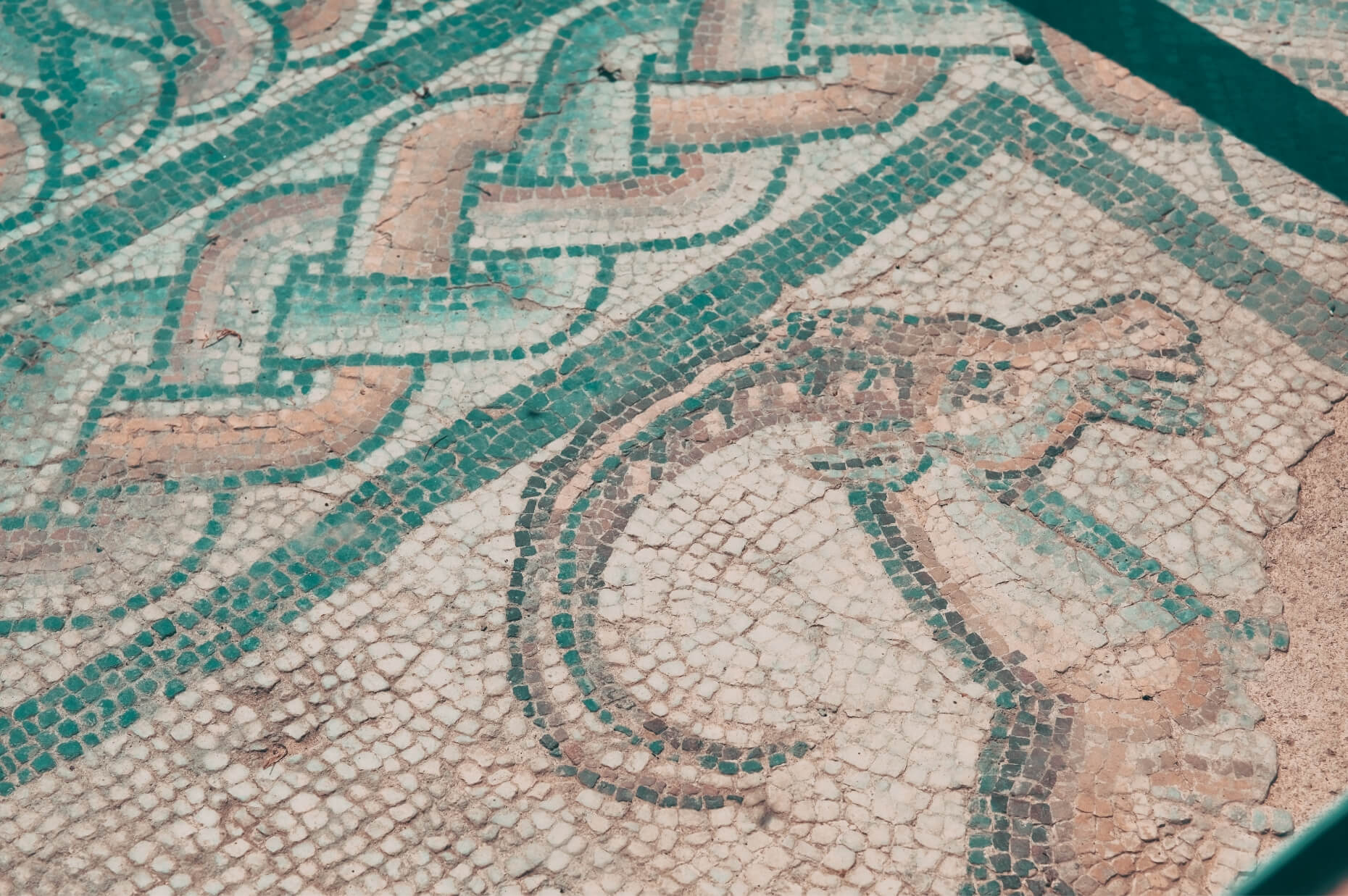
It also featured in Celtic art, before the influence of Christianity on the Celtic culture – and from 450 AD onwards, the knot motif began to appear in religious manuscripts and artwork. The earliest known example of this comes in a fragment of a Gospel Book from the 7th century, which can now be found in the library of Durham Cathedral.
One of the most famous examples of Celtic knots in religious manuscript can be found in the Book of Kells. An illuminated manuscript written in Latin, it contains the first four Gospels of the New Testament, and takes its name from the Abbey of Kells, in County Meath, where the book was kept for centuries.
The book is widely considered to be a masterpiece of calligraphy and artwork. It contains traditional Christian iconography, as well as examples of intricate Celtic knots. It’s one of the best examples of Insular artwork, a genre of art that developed from Celtic Christianity, and heavily features interwoven Celtic knots.
Another key example of this type of artwork can be found in the Lindisfarne Gospels, which was produced around 715-720 on the isle of Lindisfarne, off the coast of Northumberland. The Gospels recounts the life and teachings of Jesus, through intricate design including Celtic, Germanic and Irish styles, including detailed knot work.
The designs featured in both of these manuscripts were more intricate than ever before, featuring knotted designs and interwoven plaits, which differed from the fairly simple designs of previous centuries. Over the following centuries, Celtic knots became even more elaborate, and different styles were developed.
Although once primarily used in religious artwork, Celtic knots are now used in a variety of both religious and secular designs. Knots were often used in armour, weaponry and jewellery as well as religious buildings, tombstones and manuscripts.
Types of Celtic knots
As mentioned, there are several common types of knots. Let’s take a closer look at the different styles and Celtic knot meanings.
Trinity knot
The trinity knot, also known as a triquetra, is one of the most easily recognisable Celtic knots. The trinity knot has three overlappings, and interconnected oval loops. That’s where its name comes from, as the meaning of triquetra in Latin is ‘three-cornered’.
So, what’s the triquetra meaning? It’s thought that the three loops stand for the Holy Trinity of the Father, Son and the Holy Spirit. However, the number three was significant in Celtic culture, as it’s thought that everything came in threes.
The knot, therefore, could also stand for other trifectas, such as the past, present and future; earth, sea and water; or life, death and rebirth. It may once have had a strictly religious meaning, but today, many people interpret the trinity knot in a way which resonates with them personally.

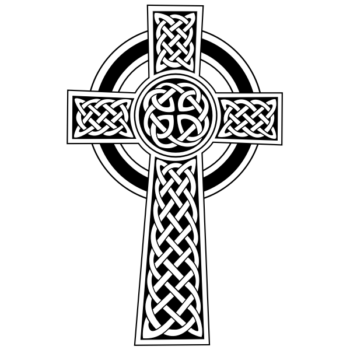
Celtic cross
The Celtic cross isn’t strictly a knot in itself, but it does feature intricate Celtic knots. The Celtic cross, also known as an Irish cross, is a crucifix that features a circle behind the four points of the cross, making up four semi-circles. Most Celtic crosses also feature intricate knot designs along the beams of the cross.
It’s one of the best-known examples of the Celtic cross, so it’s likely that you’ve seen it. It’s commonly found in graveyards, both in Ireland and Scotland, but the design is also used in necklaces, artwork and tattoos.
It’s often believed that Saint Patrick introduced the Celtic Cross, but there is some evidence that it was used in Celtic culture long before the Christian influence on Celtic culture. Therefore, the cross has both religious and secular meaning.
In Christianity, the cross represents the crucifixion of Jesus, his life and his teachings, while in the Pagan religion, it was symbolic of the four elements, and the four elements. It was thought of then, as a meeting place for divine energies.
Celtic love knot
Celtic love knots feature two interlacing hearts, which look like two separate designs but are actually interwoven to create one unbroken line with one of the hearts facing upwards and the other downwards.
The meaning behind this knot is clear: love. The linked hearts represent two people joined together in love, while the unbroken line represents the eternal nature of love. It’s thought that love knots were once treated like wedding rings are today, being swapped between two people as a sign of commitment and love.
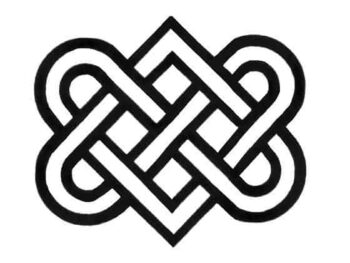
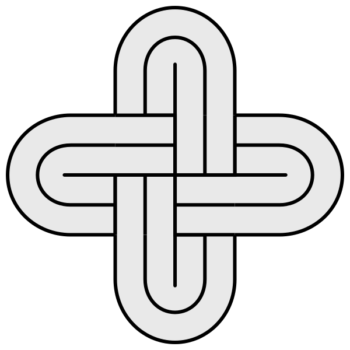
Solomon’s knot
Solomon’s knot is one of the lesser-known knots today. It consists of two closed loops, which are double interlaced, with two loops weaving under and over each other. It’s a simple yet striking design, with straighter lines and edges than the curves seen in most Celtic knots.
It’s one of the oldest Celtic knots, and has been dated back to stone age carvings. The name comes from King Solomon, and is so-named for the king’s association with wisdom and knowledge. It’s believed that the knot represents the connection between man and the divine.
Shield knot
The Celtic shield knot, as the name suggests, looks like a shield. It has a circle with four quadrants, with interwoven lines connecting each of the four distinct corners. They connect in an unbreakable bond, symbolising protection.
The shield Celtic cross was often used in battle, and it’s also traditionally been given to sick people to ward off evil spirits. For the same reason, it can commonly be seen adorning tombstones.
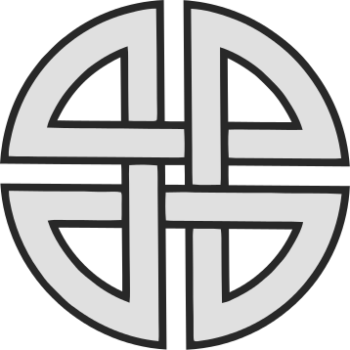
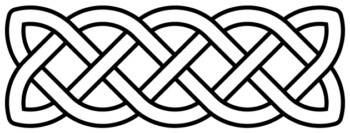
Sailor’s Celtic knot
The sailor’s knot features two interwoven ropes, and it’s thought that it was created by sailors who would weave two ropes together to create an infinite loop, before long voyages at sea as a way of remembering their loved ones back on land.
Although sailor’s knots are simple to tie, they create a strong bond that’s hard to break. That’s why this type of Celtic knot is an enduring symbol of love and friendship, often used today on wedding bands.
Dara knot
The Dara Celtic knot has an interwoven design that’s influenced by the roots of an ancient oak tree, with an interwoven design mimicking the inter-tangled roots of an oak tree. Indeed, the name “Dara” comes from the Irish word “doire”, which means “oak tree”.
The Dara knot is a modern design, but it’s inspired by Celtic lore and tradition. Ancient oaks were considered in Celtic culture, as a symbol of strength, wisdom and endurance. This is one of the Celtic knots meaning strength, therefore, and was often used on armour and weaponry.
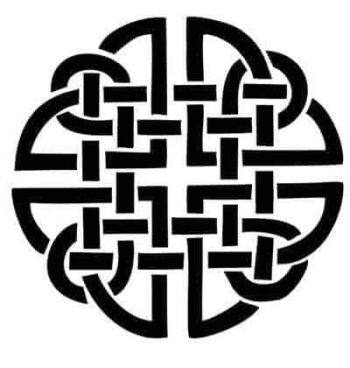
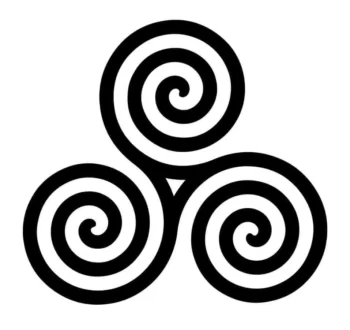
Celtic spiral knot
The spiral knot is one of the oldest Celtic knots. It’s a three-sided knot, with one line that splits into three separate spirals. It’s also known as the triskele or triskelion, and is thought to date back to around 3,200 BC!
It’s a reminder once again of the symbolism of the number three in Celtic culture. The word ‘triskele’ in Greek means three-legged, and again, it can stand for a number of different trinities. Some believe it stands for water, fire and earth, while others think it stands for the Holy Trinity.
The single line of the spiral knot highlights the interconnectedness of life and spirit, and it can often be found in spiritual places such as monuments and places of worship.
Find out more about Celtic culture
Celtic infinity knots are historic, varied in design, and have a wide array of symbolic meanings. Which one is your favourite? If you want to connect with your roots, or are simply interested in Celtic culture, why not find out more at Celtic Titles? You can even become a Lord or Lady of Ardmore, helping you to get in touch with your Irish background and to create and sustain a nature reserve in Ireland.
What you should do next...
- Browse our plots to claim your title of Lord or Lady of the Ardmore
- Add any extra gifts and accessories, inspired by Irish traditions
- Receive your gift pack in the post and enjoy!
